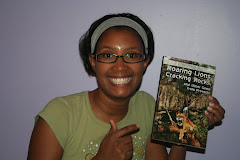Three-Legged Stool of a Spiritual Life
You’ll never sit on a three-legged stool that wobbles. If the legs are disproportionate lengths you may sit a little sideways, but you will still sit securely. A four-legged stool might wobble on you, though, because if one leg is short, it won’t touch the floor until you lean that way. Then, as you shift your weight and the stool leans with you, you may fall right off the seat. A three-legged stool is more secure because all three legs will reach the floor.
A vibrant spiritual life rests on a three-legged stool of spiritual disciplines. Roy Oswald and Barry Johnson describe such a stool in their book, Managing Polarities in Congregations: Eight Keys for Thriving Faith Communities. A healthy spiritual life needs an environment that encourages people to pursue faith through asking questions about God, encountering people of compassion who manifest the fruit of the spirit in their lives, and who are taught about submission and obedience to Jesus (55-56). In such an environment, such a church, people can practice the three-legged stool disciplines and grow in the grace and mercy of the savior.
The first leg of the stool is home rituals. Such rituals would include praying in various occasions, such as at meals, for family and friends who are sick, and in private. They would also include observing seasonal religious dates, such as Christmas, and being free to discuss biblical issues around the dinner table. Such discussions would not be negative, as in criticizing the theological views of other people at church, but would be positive discussions of biblical texts, possible interpretations, and applying God’s truths to our lives.
The second leg is membership and active participation in a small group. The function of the small group is to study and discuss biblical issues, pray, and share faith stories. Faith stories are simply the experiences of people that have impacted their faith and their life journey in someway. They may share about the death of a loved one and the hole they still feel in their life; an abusive situation that leaves them suspicious and distrustful of everyone; or a school teacher that loved them through that difficult time and planted the seeds of faith that are just now beginning to sprout, and has them in this small group. Members of this group will need to be open, loving and non-judgmental to give the seeker plenty of room to question, experience love, and grow.
Corporate worship is the third leg of a healthy spiritual life. People of all ages, theological perspectives and faith development will be able to function together in a church if they can “come together to worship God, united in their common offering of praise and thanksgiving” (57). Participation in the Lord’s Supper is the chief symbol of their unity together. (Discussion of these three legs is found on page 57).
Too often churches rely on only the third leg, corporate worship, to develop the faith and spiritual vitality of young Christians. That is only one-third of what a new believer needs to root him in deeply. Some of them may attend Bible classes, but if the function of the class is primarily to teach and not share faith stories, younger Christians may not feel comfortable being vulnerable about their past. Or, if they do share sensitive and embarrassing episodes from their history, members of the class who may not be as open and accepting might offer judgment in response to what is shared rather than the affirmation and support the new Christian so desperately needs. Or, if the class discussion turns heated, sensitive new members may decline to attend in the future. I saw a newly baptized Christian quit church after attending his first Bible class, a class where a heated discussion erupted over a question of church management of money. “If that is what following Christ is about, I don’t need it,” he said as he walked away, never to return.
Churches can’t make anyone participate in these three activities, but they can teach about the importance of faithful involvement. They can also offer basic training in home devotionals and small group leadership. The goal of this three-legged stool is to encourage the faith and growth of everyone in the orbit of the church, from the seeker just beginning to explore faith, to the mature Christian still seeking to grow in the grace and favor of God.
Warren Baldwin



Blessings and prayers,
ReplyDeleteandrea